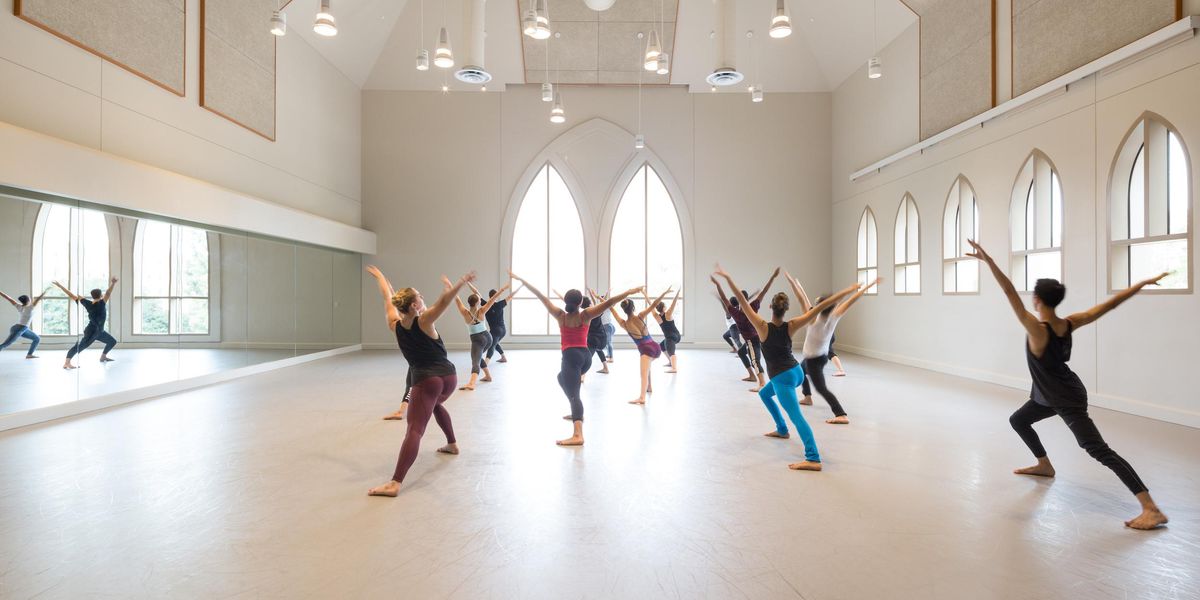Indelible Expressions
Does anyone still consider tattoos the exclusive province of sailors and outlaw bikers? The inked are everywhere among us, loudly baring their personalities or quietly concealing them, Clark Kent–style. These days, a Burmese python might have slithered under your internist’s lab coat or a Japanese koi fish could be trapped beneath your professor’s tweed. Your mom might sport your name on her biceps, not the other way around. And the Giselle whose fragile heart gave out last night at the Met? She could be the girl with the dragon tattoo.
Dance and tattoos both date back to prehistoric times, and both have come a long way since. Ötzi the Iceman’s 5,300-year-old charcoal etchings resemble contemporary skin art about as much as a Copper Age fertility dance might resemble Balanchine’s Theme and Variations. Ötzi’s 50-odd tattoos were efforts to ease the hunter’s arthritis, an affliction to which dance—healing or shamanistic numbers aside—could only have contributed.
Today’s motivations for dancing and getting inked seem more closely linked; if dance is an outward expression of our innermost emotions—the “hidden language of the soul,” as Martha Graham called it—then the tattoo is as well. Dancers use their bodies to interpret that language just as the tattooed use their skin, only the latter medium doesn’t require a theater, peculiar female footwear, or unfortunate male undergarments to function.
That said, my own dalliances with tattoos have been aimed more at charting meaningful moments in my life than at rendering my body an art gallery. I see tattoos, with their permanence and modest rites of pain, as small sacrifices, pieces of myself surrendered in recognition of experience. To me, they are tributes, totems, artifacts, admonitions, and filigreed scars. They are love letters and revelations. They are yawps, barbaric or otherwise, sounding over a living, writhing world.
I got my first tattoo 14 years ago, at age 22. I’d always wanted one (or several). I remember admiring, as a kid, the Northwest Coast Native American–style thunderbird that fanned defiantly across the back of Anthony Kiedis, lead singer of The Red Hot Chili Peppers. That bird was beautifully and powerfully drawn, its wings seeming to manipulate Kiedis’ every movement. It also evoked some of my greatest heroes: free spirits like Crazy Horse and Geronimo, who, in accordance with their respective spiritual directives, would paint themselves and tie talismans to their bodies before battle. I saw tattoos as an extension of that custom—as talismans that couldn’t untie, as war paint that wouldn’t fade. If I got inked, I’d be prepared for anything.
Of course, tattoos have now gone so mainstream in Western society that the more radical choice is probably to remain without one. Their rebel cachet has sunk as their popularity has surged. But they aren’t widely accepted in dance, despite the growing number of dancers who have them. Unless a ballet features pirates (ABT’s tattooed men and women love Le Corsaire) or Maori warriors, or is created by someone who is especially ink-friendly (Stanton Welch doesn’t make us cover our skin in his ballet Clear), many choreographers with whom I’ve worked don’t allow exposed tattoos in performances, and for good reason: They can be distracting in contemporary works and inappropriate on the classical stage.
I (obviously) believe that dance and tattoos can coexist, with the simple caveat that dancers conceal their artwork when necessary. When that line between individual expression and professional responsibility is clearly demarcated, I can’t find a conflict. Certainly, dancers wishing to festoon themselves with sprawling tattoos might want to carefully consider their venues and genre of performance. Are revealing costumes, sustained physical contact, and period storytelling involved? Does the theater lack an orchestra pit to separate stage from audience?
Those who answered yes to these questions should probably hold off, say, on sleeving out their arms or getting a back mural—lest they cast us all in a negative light. There is no holy grail of cover-up; no foolproof time machine–cream that can buff liberally illustrated skin back to neonatal form. I know; I have quested after such treasure for 14 years. What I have discovered are cover-ups that are effective if color-matched to the skin and patiently applied. PAX acrylic adhesive-based body paint is one; Skin Illustrator alcohol-based paint is another. These products aren’t cheap, they’re sensitive to humidity, and often require mid-show touch-ups, like normal stage makeup. But used correctly, they work well.
I have given myself over to dance while trying not to let it narrow my range of experience. It can be a wobbly balance to strike. Some of my favorite pursuits—motorcycling, martial arts, backpacking—involve elements of risk. But by venturing into their rich and invigorating realms, I hope I’ve become a fuller artist. Tattoos are comparatively benign, and powerless to affect my dancing. Still, some in the dance world just don’t approve of them, even if responsibly concealed. Every so often I’m cornered into mounting tired, self-evident defenses of my artwork: how it carries personal significance, how it has no bearing on anyone else, how what I do with my own skin is my choice, just as what others do with their clothes, noses, ears, hair, toenails, navels, or nipples is theirs.
Tattooed and not, we are all transient creatures that strive and evolve and inevitably—like the sun and stars—decline. Why squander any moment of that exquisite arc on scorning our superficial differences? Tattoos don’t alter what’s beneath the skin—those parts that we all share, by which our worth is really measured. If Giselle wants to wear a dragon under her peasant dress, who cares? The audience can’t see it. Live and let live. Besides, maybe Albrecht is into ink.
Above: Sascha Radetsky, Photo by Renata Pavam, Courtesy Radetsky




